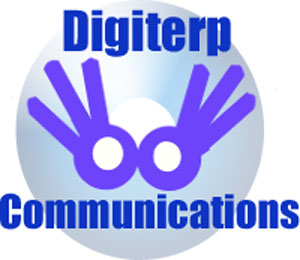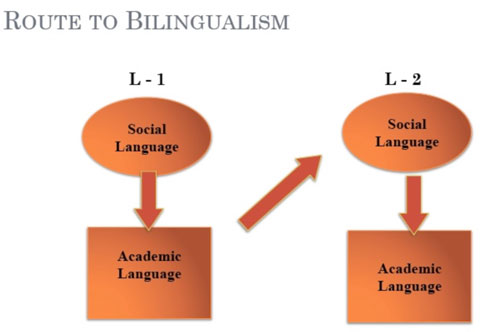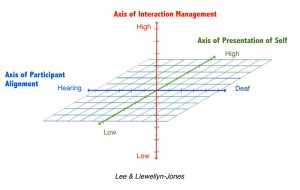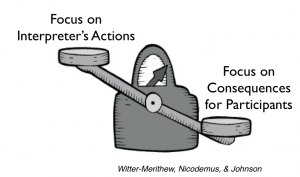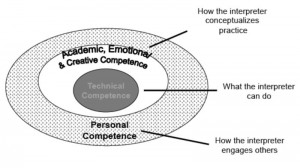
The Presentation
This workshop is part of the TIPS process created by the TASK 12 Project. Click for more info on TIPS. For information about potentially being a part of a TIPS cohort, contact LeeAnn Lundgreen.
The workshop was sponsored by:
Utah State Board of Education
Friday April 28, 6:00-9:00 PM and Saturday April 29, 8:30-5:00 PM
Resources for the Workshop
Resources, including videos, will be listed here. To access, just click on the title of the section and the resources will appear. (It’s almost like magic.)
If there is something you don’t see (because I sometimes drop details), please contact me.
"TIPS-Light" Resources
BICS & CALP/Academic ASL
Why Academic ASL Matters to Sign Language Interpreters
This is a presentation by Dr. Ben Bahan at StreetLeverage in Fremont, California in 2016. The video of the presentation is presented as well as an English translation. Though it takes more time to watch the ASL, I would recommend it is worth it to see such an excellent example of Academic ASL.
Dr. Bahan refers to the work of James Gee who is a social linguist and literary theorist who focuses on “Discourse” – differentiating between the primary Discourse a person learns in their family of origin and the “secondary Discourse” they learn in other settings. (Which connects to the idea of BICS/CALP described below. Read more about Gee’s work in his article “What is Literacy?”
Importance of Early Exposure to ASL
Henner et. al. American Sign Language Syntax and Analogical Reasoning Skills Are Influenced by Early Acquisition and Age of Entry to Signing Schools for the Deaf. Front. Psychol., 26 December 2016 | https://doi.org/10.3389/fpsyg.2016.01982
This article shares research about the impact of the age of acquisition of ASL for students. Importantly, it points out that early exposure to ASL is a benefit for both signing skills, but also cognitive development – which supports the acqusition of speech skills as well.
BICS/CALP
More information about Basic Interpersonal Communication Skills & Cognitive Academic Language Proficiency
- An article on BICS/CALP from the field of teaching English as a second language
- Information from Wikipedia on Professor Jim Cummins & BICS/CALP
- An ASL presentation of Kindergarten Readiness for Deaf students on ASLized.org
Learning English as a Second Language

The bottom graphic demonstrates what is often attempted for Deaf and Hard of Hearing students – which in part explains such poor results.
Academic ASL
 A blog supporting using ASL to developing BICS & CALP
A blog supporting using ASL to developing BICS & CALP- Resources from Gallaudet on ASL Composition
- ASL in Academics Lecture Series at Gallaudet
- Deaf Studies Digital Journal at Gallaudet University (The first journal published in ASL.)
- ASLized.org: This is a site designed to the promotion of ASL and provides ASL texts in a variety of genres.
A Video presentation of Dr. Raychelle Harris on Academic Discourse in English and ASL (Provided in ASL with English captioning)
The kick off lecture for the ASL in Academics Lecture Series
Use of Academic ASL in a High School Math Class
See the Mirrored Math resource.
Answers to Math Questions from Veditz
Posted in: "Interpreting Literature" Resources, "Putting FS on the Map" Resources, "TIPS-Light" Resources, In Service to Literacy, Mentoring Resources, Moving toward Best Practice, Sense of Place, Swiss Army Knife Tools
Relevant Articles
Here’s a list of articles that are relevant to the topics discussed in the workshop.
Posted in: "TIPS-Light" Resources, In Service to Literacy
Educational Interpreting
Resources Related to Educational Interpreting
The National Association of Interpreters in Education

The National Association of Interpreters in Education (NAIE) is a professional organization for interpreters in educational settings established in 2016. http://naiedu.org/
 More than Meets the Eye: Revealing the Complexities of an Interpreted Education
More than Meets the Eye: Revealing the Complexities of an Interpreted Education
by Melissa B. Smith
http://gupress.gallaudet.edu/bookpage/MTMEbookpage.html
View the Ph.D. Dissertation this book is based on here.
Dr. Smith did a lecture at Gallaudet University on this topic.
You can see all of the presentations archived by Gallaudet University Regional Interpreter Education Center here.
Understanding the Impact of Interpretability in Mainstream Classrooms
This chapter by Betsy Winston lays out the limitations for rigid understandings of interpreting in classroom settings.
Winston, B. 2004. “Interpretability and Accessibility of Mainstream Classrooms,” In Educational Interpreting: How it Can Succeed. Gallaudet University Press. See the article.
Articles about Educational Interpreting
New Paradigms in the Interpreted Classroom: An article written by Doug Bowen-Bailey for the RID Views -(in press August 2014)
Perspectives from Gina Oliva
Dr. Oliva is the author of “Alone in the Mainstream” sharing her experience as an “only” going through mainstreamed settings – as well as some of her research about other deaf people who went through the mainstream in a similar way.
- Sign Language Interpreters in Mainstream Classrooms: Heartbroken and Gagged
An article on Street Leverage. Check it out. - K-12 Interpreters: A Call to Arms for Sign Language Interpreter Programs
An article on StreetLeverage. Check it out.
Determining a Student’s Readiness to Successfully Use Interpreting Services
This is an article from Cindy Huff, a teacher of the Deaf/Hard of Hearing, about a framework for assessing if students are at a developmental level appropriate for benefiting from an interpreted education.
Language Acquisition
The link below has a presentation in ASL about the Common Errors of Young Children Acquiring Sign Language, helpful information in seeing what is normal language development.
Providing Access: New Roles for Educational Interpreters
By Bernhardt E. Jones, Ed.D., C.S.C.
Originally published in the RID VIEWS
Conflicts can, and do, occur when it is unclear as to the interpreter’s role at any given time. This function changes during the day, especially in the lower grades. I am suggesting (as has Winston) that the title, “educational interpreter” is too narrow, and, in fact, this position is a multi-faceted responsibility. If this is true, how do we separate the roles? How do we define what it is that we do and when?
A year ago Winston (Views) did a fine job in delineating educational interpreting responsibilities into three roles: interpreting, tutoring and aiding. Since then, Winston has discussed the notion that consulting is also a role that educational interpreters play. Consulting may be a new area that you had not considered before. But, think about all the times you have given your input in the school situation. How many times have you talked to parents? How many times have you explained “deafness” to others in the school? to students? to administrators? to regular education teachers? You may find that this list is long. Go to the dictionary or, better, go to the Web and search the word, “consulting” or “consultant” and see what you find. Do you fit into this definition during part of the time you are working in the school setting?
The public school educational interpreter is viewed quite often as a paraprofessional and, in fact, is categorized that way in many states. However, we can make the case that, although the interpreter does perform many of the duties of the paraprofessional, she/he also performs a duty that is quite different and requires separate and distinct knowledge and skills: interpreting itself. Are we not, then, more than an educational interpreter? Might we be, to use a term that Winston has expressed, an “Accessibility Specialist?” I don’t want to confuse the issue with additional terms for us, but think about the variety of tasks you perform. Perhaps we are not “just the interpreter,”but we are more than the interpreter.
Take a look at your day (or week or month, if you would like). Make a list of all the duties you perform. Try to think of everything that happens in your job. What do you do? How long do you do it? Make the list as long and comprehensive as you can. You should have a collection of everything you do. You may be surprised to see that you do quite a bit for the school and the students (both deaf/hard of hearing and hearing).
The Windmill Model
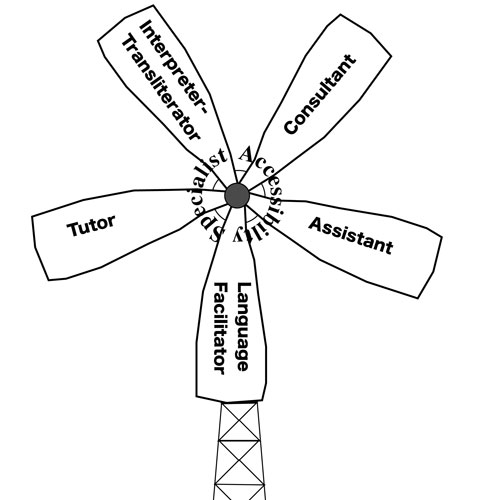
Note: The graphic has been updated since the article was written so it does not perfectly correspond to the article.
The next step is to draw your own windmill and categorize the duties/tasks that you have listed. Interpreting will include anything you do in the role of an interpreter. Tutoring will include all the tasks you do within that context. Aiding is a large and varied area or responsibility. Think of all the things you do in an aiding capacity. As discussed above, consulting is also an important role of the educational interpreter.
Isn’t this appropriate? A windmill spins in the wind and must be flexible (accommodating) in order to operate effectively and efficiently. If one of the blades is broken or damaged, the windmill will not operate properly. Are we like that?
I suggest that we are. With this model we can delineate our roles. When we are able to do that, we can better understand why dilemmas cause conflict. Conflict arises when we are not sure on which blade to categorize our dilemma. We are better able to handle conflict if we know the rules by which to address the conflict. When conflict arises, we know where it fits and, therefore, we know how to respond (how to “spin” our windmill). [I guess it depends upon who is blowing on our windmill.] The blades of the windmill can be viewed as contexts. When we know the contexts, we know the rules. This is where the Code of Ethics has caused us concerns. When applied to the interpreting blade (role, context) of the model, it is easy to understand the importance of the Code and to adhere to its principles. When we apply those same criteria to the other blades (roles), it becomes cloudy and appears to conflict with the role. The problem is compounded if other professionals do not know our contexts and/or confuse our contexts (roles, blades). We then can apply the “educating others about our role(s)” principle of the Code by explaining our contexts and the roles to others on the educational team. The other members of the educational team will not realize this by themselves. We have a professional obligation to educate our fellow professionals. By doing so, we will be viewed as professionals.
This is only the beginning. When we understand which role we are working within, we can start addressing bigger questions in our field. These questions might involve questions of interpretability in the classroom, accessibility to content, an interpreted education. These questions impact our windmill and, therefore services to students who are deaf and hard of hearing.
Information about the Educational Interpreter Performance Assessment
This site provides information both about the test and about the expectations for interpreters working in educational settings. classroominterpreting.org
Guides for Classroom Interpreting for Parents, Professionals, and Students
Dr. Brenda Schick, the co-creator of the EIPA, along with Boys Town, created a series of guides for the Laurent Clerc National Deaf Education Center.
Training in Interpreting Public Schools (TIPS)
TASK12: This is the organization that led to the development of the Training in Public Schools (TIPS) module. The project serves 14 states and provides both training and assessment with the EIPA.
Post-Secondary & Transition Resources:
The Minnesota Transition Guide for Teachers of Deaf/Hard of Hearing was created as a pilot project for the school year 2012 – 2013. It is meant to give guidance in the area of transition for Deaf or Hard of Hearing students. View Transition Guide.
PEPnet: An organization focused assisting Deaf and hard of hearing students in their transition to post-secondary education. They have a module, Map It!, that is designed as a support for students in the transition stages.
Article from 2003 RID Views
Posted in: "Exploring Emerging Paradigms" Resources, "Finding Your Place" Resources, "Part of the Team" Resources, "TIPS-Light" Resources, "Turning on the Light" Resources, Case Conferencing Resources, Emerging Paradigm Resources, In Service to Literacy, Mentoring Resources, Moving toward Best Practice, Sense of Place, Swiss Army Knife Tools
Deaf People’s Experiences in Education
Deaf People’s Experiences in Education
Critical in the consideration of interpreters in education is the impact it has on D/deaf and hard of hearing students. This section is not meant as an all-inclusive resource, but hopefully will be a growing list of resources.
 Gina Oliva: Alone in the Mainstream
Gina Oliva: Alone in the Mainstream
From the Gallaudet University Press website:
When Gina Oliva first went to school in 1955, she didn’t know that she was “different.” If the kindergarten teacher played a tune on the piano to signal the next exercise, Oliva didn’t react because she couldn’t hear the music. So began her journey as a “solitary,” her term for being the only deaf child in the entire school. Gina felt alone because she couldn’t communicate easily with her classmates, but also because none of them had a hearing loss like hers. It wasn’t until years later at Gallaudet University that she discovered that she wasn’t alone and that her experience was common among mainstreamed deaf students. Alone in the Mainstream recounts Oliva’s story, as well as those of many other solitaries.
In writing this important book, Oliva combined her personal experiences with responses from the Solitary Mainstream Project, a survey that she conducted of deaf and hard of hearing adults who attended public school. Oliva matched her findings with current research on deaf students in public schools and confirmed that hearing teachers are ill-prepared to teach deaf pupils, they don’t know much about hearing loss, and they frequently underestimate deaf children. The collected memories in Alone in the Mainstream add emotional weight to the conviction that students need to be able to communicate freely, and they also need peers to know they are not alone.
Gina A. Oliva is a former professor in the Department of Physical Education and Recreation at Gallaudet University in Washington, DC.
http://gupress.gallaudet.edu/bookpage/AITMbookpage.html
Positioned as Bystanders: Deaf Students’ Experiences and Perceptions of Informal Learning Phenomena
by Dr. Melinda “Mindy” Hopper
This is a dissertation produced from a study that looks at the experiences of two Deaf middle school students and how they had access (or didn’t) to incidental learning and other social encounters. Very worth the read.
Posted in: "Exploring Emerging Paradigms" Resources, "TIPS-Light" Resources, Moving toward Best Practice, Sense of Place, Swiss Army Knife Tools
Discourse Mapping
Discourse mapping is a term used for both the process of analyzing texts in interpreter education and skill development and the features of an interpretation that use linguistic features to create a connected and cohesive product. These resources are related to both doing the analysis and being able to create more effective discourse mapping in your work.
Analyzing Discourse: An independent study packet for working with Life in Parallel
This is a packet that takes you through a step by step process for doing discourse analysis.
Navigating Discourse Genres: Canoeing in the BWCA
This video series features a Deaf woman and a hearing man talking about their experiences canoeing in the Boundary Waters Canoe Area Wilderness. There are 6 parallel talks in this topic in the following genres: narrative, procedural, explanatory, hortatory, and argumentative.
Depiction, Blending, and Constructed Action
This is an online workshop that explains about features that are a part of spatial use, classifiers, and depicting action and conversation in ASL. By Miako Rankin, from Galladuet University.
Posted in: "TIPS-Light" Resources
Horizontal Violence
Emily Ott, in her master’s research, looked at the concept of Horizontal Violence in the field of interpreting. She suggests that;, as happens in other professions that work in situations where oppression and injustice is frequent, frustrations that build up in the professionals from witnessing injustice is sometimes directed at colleagues.
Posted in: "TIPS-Light" Resources
Building Narrative Skills
Here is a series of videos for working on depiction and ASL Narrative skills.
The Roadrunner Wins Again
This clip from Ella Mae Lentz is from Sign Media, Inc. “Tales from the Green Book“.
Posted in: "TIPS-Light" Resources, Moving toward Best Practice, Sense of Place, Swiss Army Knife Tools
Resources related CODA/Deaf-parented Interpreters
Research on Deaf-Parented Interpreters
Amy Williamson’s research has been looking into what the experience of Deaf-parented and Heritage signers are in interpreter education. Here are some of the resources she has created:
- Master’s Thesis: Heritage learner to professional interpreter: Who are deaf-parented interpreters and how do they achieve professional status?
- Presentation at Street Leverage Live
- An Article on “The Cost of Invisibility”
Perspectives on Language Brokering
A blog post from Jemina Napier on Sign Language Brokering Expierences in the Deaf Community
Posted in: "TIPS-Light" Resources
Bonus Activities
Bonus Activities
Charting Your Role-Space
This activity is best done in conversation with other colleagues.
Download PDF of Role-Space Activity sheet
Fill out the diagram above for 4 different classroom scenarios.
- First grade morning check-in
- High School Science Lab
- Assembly
- Middle School parent-teacher meeting
Think about what type of choices you might be called on to make in that specific scenario. (Depending on the students and teacher you have in mind, this might also shape your choices.) They do it alone and then compare. It’s a chance to see how they might function differently and make different decisions than a colleague.
If you need more information on Role-Space, check here.
Interpreting Batman Forever
As we are learning to incorporate more discourse mapping in our work, we can also learn to take advantage of discourse mapping to help us navigate voicing for Deaf students. This activity is designed to help you see some of the strategies being used by a Deaf student when describing a movie and its characters. This activity also is designed for you to become more comfortable with the Gish Approach – focusing on the main ideas being presented without getting too caught up in the details.
We recognize that this is a very challenging text – more so than what you would find on the actual EIPA. We have tried to provide a lot of support so that you can work your way up to actually interpreting it. As facilitators, we also will be interpreting it to provide some sample interpretations. Because of this challenge, we are going to have the activity open throughout the module so that you can work on it as you see fit. (It is definitely not something that we would want you to try to do in one day, but try to absorb over the course of several days or even a couple of weeks.) With that disclaimer, good luck. Hope that this will be a good learning process.
For this activity, you will work with 3 minutes of ASL video, but in a variety of ways.
- Warm-up: Watch the video of a young boy responding to questions in an interview format. This is the same signer who will be talking about a different topic for the activity.
Password: Doug - Preparing for the Assignment: The text in question is a student sharing some information about the movie, “Batman Forever.” Use the following information to prepare for working with the ASL text.
Movie summary:
The Dark Knight of Gotham City confronts a dastardly duo: Two-Face and the Riddler. Formerly District Attorney Harvey Dent, Two-Face incorrectly believes Batman caused the courtroom accident which left him disfigured on one side; he has unleashed a reign of terror on the good people of Gotham. Edward Nygma, computer-genius and former employee of millionaire Bruce Wayne, is out to get the philanthropist; as The Riddler he perfects a device for draining information from all the brains in Gotham, including Bruce Wayne’s knowledge of his other identity. Batman/Wayne is/are the love focus of Dr. Chase Meridan. Former circus acrobat Dick Grayson, his family killed by Two-Face, becomes Wayne’s ward and Batman’s new partner Robin, the Boy Wonder.
from http://www.imdb.com/title/tt0112462/plotsummary
- Create an Initial Interpretation.
Try creating an interpretation for this text. Recognize that this is relatively a cold way to approach the text. If you want to record your interpretation to compare it to your later interpretation, that would be great.
Password: Doug - Complete a Discourse Map for the Text
We have started a discourse map for this text, but left a lot of blanks. Watch the text again and see if you can fill in the blanks. Please note that there would be many ways to map this text, so if you want to re-arrange the structure, feel free to do so. The changes in color and shape are designed to help show the different levels of detail in the text.
– Download map as word document that you can fill out.
– Download PDF document that you would need to print and write on. - View more complete discourse map.
Download the completed map. Again, this is not the only way to do this and does not include every detail. - View a guided tour of the text.
The following video in YouTube has annotations with comments about choices the signer makes. Use this to familiarize yourself in more depth with the text. (Note this is part of a longer text.. you just need to watch the first 3 minutes. You also should feel free to pause the video to be able to read the annotations. You can scroll over the white dots on the control bar and read the comments while it is paused.) - Create another interpretation of the text. You just need to record the audio of your interpretation. If you have a camera, set it to film the computer screen. If you are doing this activity with colleagues, share your reflections on what you learned through the process with them.
Posted in: "TIPS-Light" Resources
Brain Science & Interpreting
Here are some of the resources which inform our approach to education.
Make it Stick: The Science of Successful Learning
by Peter Brown, Henry Roediger and Mark McDaniel
This book uses stories of successful learning to illustrate the principles of how our brains actually develop the capacity to learn and remember, using techniques like forced retrieval, spacing, interleaving, priming, etc.
To read more about these principles, check out an article on how these principles can be allied to online learning.
 Thinking Fast & Slow
Thinking Fast & Slow
by Daniel Kahneman
This is a book that explains how the two systems of the brain work – and how it applies to our decision making process.
Here’s a video book review and explanation of the many of the concepts in the book.
Posted in: "TIPS-Light" Resources
Interpreting Literature
- Shared Reading Project, Gallaudet University
- Visual Language and Visual Learning (VL2) at Gallaudet’s Science of Learning Center
- Classroom interpreting web site (direct link to “Interpreting and children” page) – Boy’s Town
Hop on Pop: English version
Hop on Pop: ASL phonemes
The Story of Ferdinand: ASL sample (From ASL Inside)
To Kill a Mockingbird AudioBook sample
Posted in: "Interpreting Literature" Resources, "TIPS-Light" Resources, Mentoring Resources, Moving toward Best Practice, Sense of Place, Swiss Army Knife Tools
Fingerspelling Resources
- The Importance of Fingerspelling from VL2 at Gallaudet
- The Transition from Fingerspelling to English Print by Tamara S. Haptonstall-Nykaza and Brenda Schick
- Presenting Rare Words by Kevin Williams
On Fingerspelling Tests
Recognizing that the most dynamically equivalent way to represent spoken English in sign language is through rapid fingerspelling, Kevin Williams articulates why this approach is an effective option. That just as hearing students get phonemic clues that they need to put together to actually spell the word, deaf students can get phonemic clues from rapidly fingerspelled words but need to be able to translate those fingerpselled letters into a written word.
Posted in: "Interpreting Literature" Resources, "TIPS-Light" Resources, Mentoring Resources, Moving toward Best Practice, Sense of Place, Swiss Army Knife Tools
Discourse Mapping Resources
Resources for Discourse Mapping
Discourse mapping is a term used for both the process of analyzing texts in interpreter education and skill development and the features of an interpretation that use linguistic features to create a connected and cohesive product. These resources are related to both doing the analysis and being able to create more effective discourse mapping in your work.
Analyzing Discourse: An independent study packet for working with Life in Parallel
This is a packet that takes you through a step by step process for doing discourse analysis.
Navigating Discourse Genres: Canoeing in the BWCA
This video series features a Deaf woman and a hearing man talking about their experiences canoeing in the Boundary Waters Canoe Area Wilderness. There are 6 parallel talks in this topic in the following genres: narrative, procedural, explanatory, hortatory, and argumentative.
Depiction, Blending, and Constructed Action
Miako Rankin, from Gallaudet University, did a workshop on Depiction that provides a good framework on how space is used, how classifiers are incorporated into that, and how depiction of action and conversation is an important framework for helping to understanding the mapping of space and discourse.
Videos for Discourse Mapping
A Source Text for Discourse Mapping Practice
Source Text with Processing Time
Translations without Mapping
To the best of our ability
With Mapping
Slavery and American Revolution
Source Text
No Mapping
With Mapping
Echolocation
The original lecture
With Commentary on Fingerspelling & Discourse Mapping features
A High School Anatomy Lecture
Posted in: "Cartography for Interpreters" Resources, "TIPS-Light" Resources, Discourse Mapping, In Service to Literacy, Mentoring Resources, Moving toward Best Practice, Putting Theory into Practice, Sense of Place, Swiss Army Knife Tools
Demand-Control Schema
Publications
The work by Robyn Dean and Robert Pollard has facilitated a fundamental shift in the interpreting profession from a deontological sense of ethics to a more teleological one. If you are curious about what that means, check out their web site at: Demand-Control Schema
From their web site, you can contact Robyn Dean for the latest information. It is important to recognize that understandings of the Demand-Control Schema is not static. Dean & Pollard are continuing to refine the application of DC-S so be sure to look for the most up-to-date publications and materials.
The latest article from Dean and Pollard which contains the most updated formulation of the Demand-Control Schema in an article format.
Dean & Pollard, 2012. Context-based Ethical Reasoning in Interpreting: A Demand Control Schema Perspective. The Interpreter and Translator Trainer, 5(1) 2011, 155-82.
You can access more of Dean’s publications here.
Webinars & Videos
MARIE Center Webinars
Robyn Dean did a series of webinars in 2014 for the MARIE Center as part of the NCIEC. These are presented in spoken English with captioning and ASL interpretation.
Videos as Part of NCIEC Mentoring Toolkit
Robyn Dean and Bob Pollard created a series of ASL videos explaining the Demand-Control Schema. (These are created in ASL without any English translation.) See those videos under the heading “Robyn Dean.”
Additional Resources
Facebook: get updated information here.
Observation-Supervision: Here’s a blog post from Robyn Dean about the important of developing these groups for observation-supervision.
 Text Book: In 2013, Robyn Dean and Robert Pollard published a textbook on Demand-Control Schema. You can order a copy here.
Text Book: In 2013, Robyn Dean and Robert Pollard published a textbook on Demand-Control Schema. You can order a copy here.
A Resource on Tacit Schemas for Ethical Decision-Making
Rest, J.R., Navarez, D., Bebeau, M., and Thoma, S.J. (1999). Postconventional moral thinking: A neo-Kohlbergian approach. Mahwah, NJ: Lawrence Erlbaum Associates.
Posted in: "Anatomy of Healthcare Interpreter" Resources, "Anatomy of Medical Interpreter" Resources, "Exploring Emerging Paradigms" Resources, "Finding Your Place" Resources, "Part of the Team" Resources, "TIPS-Light" Resources, "Turning on the Light" Resources, Case Conferencing Resources, Emerging Paradigm Resources, In Service to Literacy, Mentoring Resources, Moving toward Best Practice, Putting Theory into Practice, Sense of Place, Swiss Army Knife Tools, Wisconsin Ed Summit, Workshop Resources
Role-Space
The most complete treatment by Robert Lee and Peter Llwellyn-Jones is in their book:
Re-Defining the Role of the Community Interpreter: The concept of role-space. 2014. Lincoln, UK: SLI Press. View on Amazon.
- The presentation from Robert Lee and Peter Llewellyn-Jones from the CIT Conference
- A paper from Supporting Deaf People conference in 2011
- A video explanation in ASL of this concept by Robert Lee – created for the Gallaudet University Regional Interpreter Education Center
Posted in: "Exploring Emerging Paradigms" Resources, "Finding Your Place" Resources, "Part of the Team" Resources, "TIPS-Light" Resources, "Turning on the Light" Resources, Case Conferencing Resources, Emerging Paradigm Resources, Mentoring Resources, Moving toward Best Practice, Putting Theory into Practice, Sense of Place, Swiss Army Knife Tools, Wisconsin Ed Summit, Workshop Resources
Relational Autonomy
 Relational Autonomy – Presentation by Anna Witter-Merithew & Brenda Nicodemus
Relational Autonomy – Presentation by Anna Witter-Merithew & Brenda Nicodemus
Blog Posts on Street Leverage on related topics by Anna Witter-Merithew:
- Sign Language Interpreters: Stepping Out of the Shadow of Invisibility
- Sign Language Interpreters: Are Acts of Omission a Failure of Duty?
- Sign Language Interpreters: Breaking Down Silos Through Reflective Practice
 Nurse Autonomy as Relational by Chris MacDonald (Contact Doug for further information)
Nurse Autonomy as Relational by Chris MacDonald (Contact Doug for further information)
Posted in: "Exploring Emerging Paradigms" Resources, "Finding Your Place" Resources, "Part of the Team" Resources, "TIPS-Light" Resources, "Turning on the Light" Resources, Case Conferencing Resources, Emerging Paradigm Resources, Mentoring Resources, Moving toward Best Practice, Putting Theory into Practice, Sense of Place, Swiss Army Knife Tools, Wisconsin Ed Summit, Workshop Resources
About the Presenters
About the Presenters
Doug Bowen-Bailey is an interpreter, mentor, educator, and resource developer who lives in Duluth, MN. He has partnered with the CATIE Center at St. Catherine University to create numerous CDs, DVDS, and online modules related to interpreting in healthcare and educational interpreting. Along with Patty Gordon, he created the Teaching Interpreters in Public Schools (TIPS) process to support educational interpreters in raising the level of service in the classroom and their performance on the EIPA, so he is experienced with issues related to both healthcare and education. He currently serves as the webmaster for healthcareinterpreting.org and the Conference of Interpreter Trainers. Doug can be contacted at dbb@digiterp.com.
Patty Gordon has a B.A. in Linguistics from Metropolitan State University and a Master of Liberal Studies from the University of Minnesota as well as certificates from the University of Colorado’s Teaching ASL and Master Mentor programs. She is a community interpreter in private practice for over 24 years, an adjunct instructor in the ASL Interpreting Department at St. Catherine University in St. Paul, Minnesota and has developed an taught workshops focused on ASL linguistics, interpreting process strategies, mentoring and performing arts interpreting, among others. As a consultant, she provides interpreter evaluation, program development, ASL media translation, and curriculum development. As a mentor and mentor trainer she has worked and offered support to programs in Minnesota, Alabama, Louisiana, Iowa, South Dakota, Kansas and New Brunswick, Canada. Patty can be contacted at pattygordon@mac.com.
